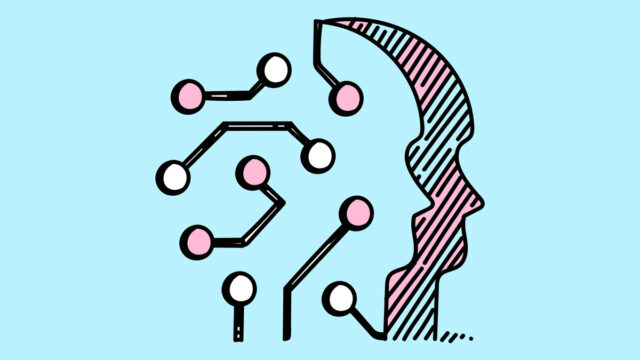GenAI Will Force a New Business Model for Agencies
Don’t miss Brandweek, Adweek’s ultimate experience for marketers, September 11-14 in Miami. Connect with peers and gain insights and inspiration from top brand marketers and industry icons at Glossier, Coca-Cola, Taco Bell and more. Register.
Until quite recently, the communications industry was a laggard when it came to adopting advanced tech; gut instinct led the way for decades. As such, many agencies have been operating in antiquated fashion for years now. Most agencies use time- and materials-based billing models, which essentially incentivize them to work the long way—the longer a project takes, the more money an agency stands to make. Though this may benefit agencies in the short term, it can be at the expense of long-term success with clients.
Time-based billing also leads to tension around overservice. Agencies often find themselves in spirals trying to meet unrealistic client expectations, falling short and ultimately exceeding hours they’re unable to bill for to begin with. As part of that model, junior- to mid-level employees are often overworked and underpaid. This dynamic leads to high turnover, lower-quality work, frustrated clients and countless other pitfalls—but generative AI tools hold promise for alleviating these pain points.
It’s no secret that agencies often earn more profit margin off junior employees. As such, many agencies are built to be about 70% junior- to mid-level employees and 30% senior employees. But as many junior employees in this structure burn out, what will happen to the bottom half of the triangle?
Currently it gets backfilled with more junior people; it’s a vicious cycle. With the adoption of GenAI-powered comms tech tools, I foresee agencies shifting to an upside-down triangle model—or a nabla. With this new model, we’ll see fewer people with less experience at the bottom, albeit empowered by technology to work faster and smarter. To be clear, this does not mean GenAI will replace junior people—it means GenAI will change the roles of junior people, and yes, there will be fewer junior- to mid-level people in agencies, but the ones who stay will be doing more meaningful, productive work.
A move to value-based billing
When leveraging the efficiencies of GenAI, agencies will be able to make the switch to value-based billing, which, as opposed to time-based billing, can give clients more confidence that they’re receiving quality work in a timely manner without overpaying. A confident client is often a happy one; agencies will be incented to work faster and smarter as they are compensated for results, not activities.
The advantages of GenAI will be profound for agencies and clients, but individual workers will also reap the benefits. Sophisticated tools have the potential to upskill staff, enabling industry pros to expand their skillsets in a variety of ways and earlier on in their careers. For example, writers can now become visual storytellers thanks to platforms like Midjourney making graphic design more accessible; on the flip side, creative or account teams can become stronger writers with text generation tools. Additionally, GenAI may usher in more objective methods for assessing employee performance, keeping internal politics from playing a role in reviews or staffing decisions and possibly creating transparency around influencer pay equity in an otherwise opaque supply chain.
Ultimately, as agencies invest in their comms tech stacks, they’ll be able to expand the range of their offerings. The more needs that agencies can service, the less distinction there will be between types of agencies—so instead of getting hung up on the semantics, we’ll see a more holistic approach that places a greater focus on key differentiators, which will become increasingly attractive to clients. Eventually, procurement departments on the client side can vet agencies based on the makeup and performance of their tech stacks.
Making the shift
Amid the GenAI hype, fears around job displacement and other dangers are understandable but often lack the full perspective. This sort of fearmongering has prevented many industry pros—and agencies—from fully considering the possibilities that GenAI can unlock for them. Make no mistake: GenAI tools are not perfect and never will be, nor will they ever be able to completely replace human intelligence. But by and large, the potential pros of GenAI outweigh the potential cons for communicators. GenAI tools are already turning two-hour tasks into two-minute tasks, and the crazy part? They’re only going to get faster and better.
One of GenAI’s greatest efficiencies will be eliminating the mundane, “grunt work” tasks often owned by junior employees. From admin work like sending agendas and conducting research to tedious tasks like drafting client updates and reporting campaign metrics, GenAI tools decrease the drudgery, enabling industry pros at all levels to spend more time on high-value, strategic tasks and less on bureaucratic BS.
Of course, these changes can’t happen overnight, and every agency’s evolution and journey will be unique. To start making the shift to value-based billing, agencies should consider the following steps.
Productize your offerings. Create a detailed menu of all of the services the agency could possibly provide and categorize them by basic, medium and premium offerings. Draft detailed scopes of work and time commitments for each task to stave off possible scope creep.
Do the math. Figure out what each task, offering or service provided actually costs on average using a basic formula of compensation plus fringe plus overhead. Then, mark up lower-value tasks at a lower percentage (10-15%), higher-value tasks at a higher percentage (15-25%) and premium tasks above 25%. Determine average costs modeling your high-performing staff—that way, the agency will be forced to use only top talent and top technology to meet margin goals.
Get procurement on your side. The shift to value-based billing will not work unless you bring procurement over the wall and convince them that there’s savings for the client because you’ll be compensated for the work itself and for the value of the work based on the task at hand, not how long it takes to do the work.
This shift will undoubtedly be smoother for small- to mid-sized agencies. After all, they’re always looking for a competitive edge, which smart tech can provide. And compared to large agencies, they’re more agile with adopting new technologies and changing their models. When building their tech stacks, agencies will need to decide whether to develop their own tools or use outside partners. Industry pros aren’t typically known for their STEM expertise, so agencies that develop their own tools will need to hire software engineers, data scientists, front- and back-end developers, and UI/UX developers to bring their vision to life.
Most importantly, agencies integrating GenAI will need to embrace a culture of rapid prototyping. Agencies will need to try different models and recognize that no one platform is going to be able to do everything; you need multiple tools working in tandem, each completing a piece of the puzzle.
What’s next?
While this feels like a new frontier, it’s likely to take form faster than we realize. GenAI’s place in communications will continue to evolve exponentially, and agencies that truly want to remain competitive will need to keep a watchful eye.
Agencies shouldn’t sit on the sidelines forever, but there is some merit in spectating. Agencies that redesign business models with GenAI early on can serve as case studies, either as blueprints for success or as roadmaps for what to avoid. But the bold agencies that succeed early with GenAI are poised to gain a major competitive edge. Ultimately, those agencies will be the trailblazers moving our industry into the future.
Although adopting and developing GenAI can feel like a race, it’s important to remember that it shouldn’t be. Agencies should absolutely be excited and open-minded about GenAI, but they still need to be mindful about how and why they’re using it. Agencies shouldn’t adopt GenAI “just because;” rather, GenAI usage should always be strategically connected to the agency’s goals and values, ensuring better outcomes for both clients and employees.
https://www.adweek.com/agencies/genai-will-force-a-new-business-model-for-agencies/


